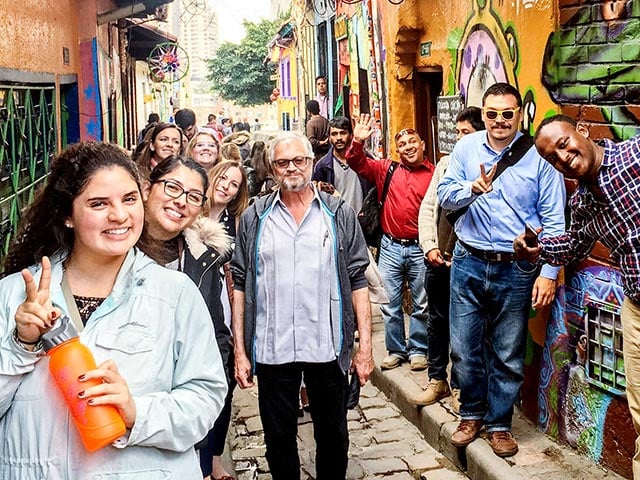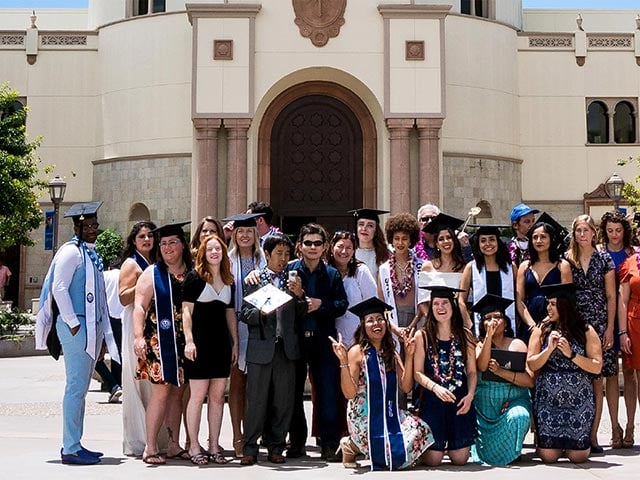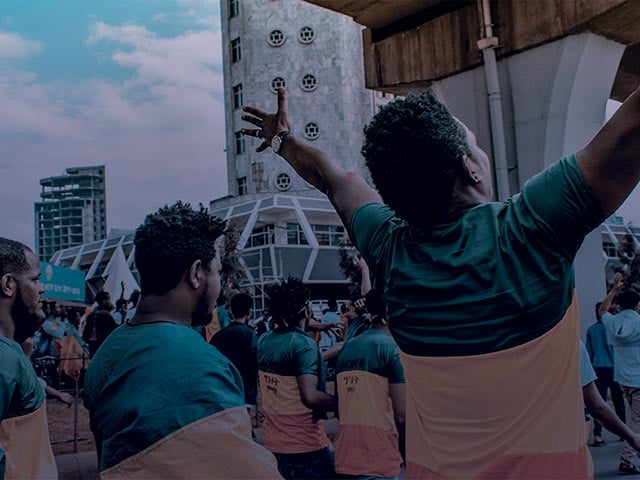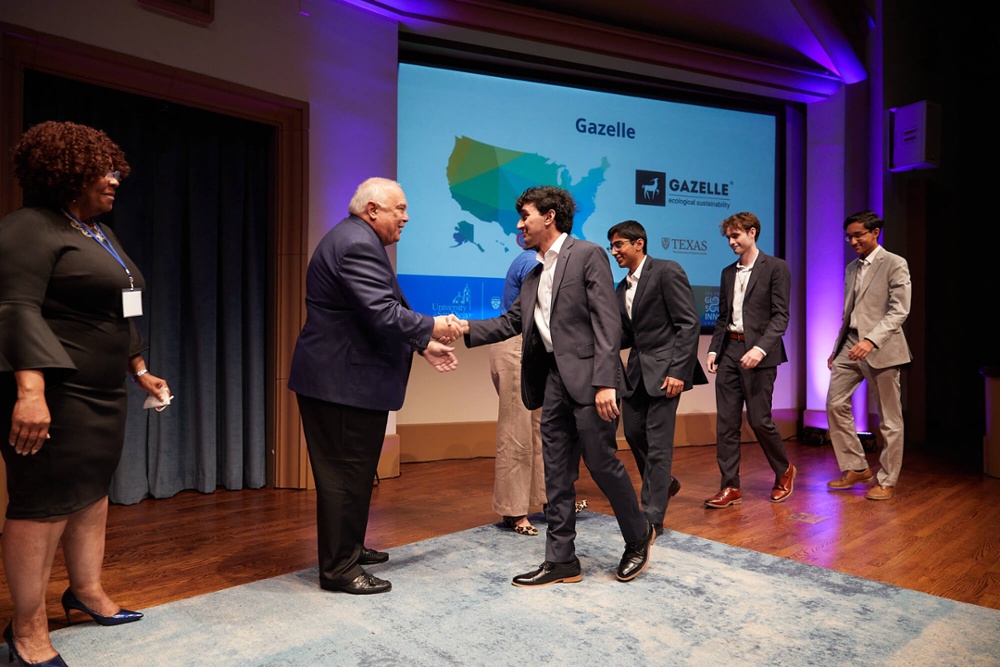Better Synergies, Better Outcomes: Bridging the Local-National Divide for Urban Violence Prevention

Authored by Julia Canney, Policy and Communications Associate at Impact:Peace, PiOC Co-Facilitator
Peace in Our Cities is an initiative co-facilitated by Pathfinders for Peaceful, Just and Inclusive Societies, Impact:Peace, and +Peace, launched in September 2019. It brings together 20 cities and more than two dozen partner organizations as a platform to: 1) amplify knowledge of the scale of the urban violence problem and the promise of evidence-based solutions to save lives and heal communities, 2) support city leaders and partner organizations in efforts to reduce the most serious forms of violence in their cities, and 3) advance innovative and evidence-based policies for violence prevention and reduction in an urban context.
Peace in Our Cities co-facilitator Impact:Peace is currently undertaking research examining the impact of COVID-19 on areas of violence in cities around the world. The six-part research agenda, conducted as part of the FCDO-funded project, ‘Peace in Our Cities in a Time of Pandemic,’ will be accompanied by this blog series in an effort to distribute experiences, best-practices, knowledge, and the most pressing questions faced by Peace in Our Cities members.
Interested in joining Peace in Our Cities? Get in touch by emailing team@peaceinourcities.org and share your insights and questions on social media by following #PeaceInOurCities on Twitter.
 Reducing urban violence requires concerted focus at the city level, but also coordination with national governments. The relationship between city and national authorities creates both opportunities for and impediments to the work of violence reduction. The COVID-19 pandemic created an environment that forced municipalities and national governments to take stock and reevaluate the divides that often exist between them.
Reducing urban violence requires concerted focus at the city level, but also coordination with national governments. The relationship between city and national authorities creates both opportunities for and impediments to the work of violence reduction. The COVID-19 pandemic created an environment that forced municipalities and national governments to take stock and reevaluate the divides that often exist between them.
Across the globe, we saw adaptations ranging from the devolution of powers, to municipalities to tackle the pandemic and broader funding mechanisms for public health initiatives that could be a model for violence prevention in a post-COVID-19 world. At the same time, however, extended emergency orders, increased government surveillance tools, and police enforcement of public health orders have shown that increased government capacity does not necessarily mean better policy on violence prevention, and these issues must be addressed in any future efforts to better align city and national level efforts.
What does the future of city-national government relations for violence prevention look like, and what lessons can be learned from efforts taken during the COVID-19 pandemic? In an April webinar, Peace in Our Cities members discussed the need to situate global responses at the neighborhood and local level, while simultaneously strategically internationalizing issues that can help bring attention to the necessity of violence prevention in their communities. Informed by the evidence brief, City – National Government Relations: Implications for Violence Prevention, by Dr. Joel Day and Nasema Zeerak, members examined the lessons learned from city-national interaction during COVID-19, and discussed the actions that can be taken to strengthen existing ties and build new ones as the world continues to grapple with the twin pandemics of public health risks and violence.
The brief outlines how the COVID-19 pandemic has created new opportunities for city and national authorities to work together, and provides policymakers with recommendations on how to apply these lessons at a local level to bridge the local-national divide in violence prevention work. It outlines several pre-COVID-19 case studies across three local-national dynamics—coordination, competition, and capacity—and demonstrates how cities have effectively sought to navigate these complex dynamics in the contexts of violence. The brief highlights how the public health lessons from city-national partnership during COVID-19 can be transitioned to urban violence prevention, and also offers recommendations to global organizations, academics, city diplomats and activists to help ensure better synergy between local and national violence prevention efforts.
During the Peace in Our Cities exchange, Dr. Day and Ms. Zeerak expanded upon the research in the brief to give a more conceptual overview of the relational constraints between different levels of government, and why there is often a disconnect between violence prevention efforts at the city level and violence prevention efforts at the national level. They asked three key questions of the case studies, and posed these to the webinar participants:
- How can cities and national governments better coordinate on violence prevention?
- In what ways can cities and national governments work around political competition?
- How can municipalities amplify their violence prevention initiatives in a resource-constrained environment?
The case studies covered in the brief looked at city-national engagement in 6 different contexts across these three questions, and emphasized that civil society, feedback loops, and systems of accountability were critical in the success or failure of the studied partnerships. In particular, city networks like Peace in Our Cities and the Strong Cities Network are extremely beneficial to cities, as they allow cities to expand their own diplomatic connections while engaging in multiple levels of governance around best practices in violence prevention.
During the April webinar, Peace in Our Cities members also heard from Felix Munger, Executive Director of PiOC member, the Canadian Municipal Network on Crime Prevention. Felix spoke to CMNCP’s experiences working with municipalities across Canada’s governmental system, and the ways in which the intricacies of differing priorities and levels of government can help or harm violence prevention efforts. He emphasized Dr. Day and Ms. Zeerak’s point that violence prevention efforts and COVID-19 responses have complementary skill sets and structures, and that these should be used to pivot post-COVID.
Felix and other PiOC members shared that, in their city and country contexts, there are often structures put in place that create competition amongst cities—competition for funding and other resources, as well as competition for national priorities—and that it is often easier to build horizontal relationships between cities, rather than between cities and the national government. They emphasized that COVID-19 has forced a broader, multi-sectoral response from organizations and different parts of city government, who previously may have been competing for grants and funding within a city because of their competing priorities. Partners in Cali, Colombia stressed that COVID-19 has actually made it easier to present violence prevention as a public health strategy to the public, as communities are coming around to a method that has been in place for several years in the city.
As we enter the second year of lockdown for many countries where vaccine rollout is still hampered by international dynamics, PiOC members are looking towards how city and national governments can work together to streamline these processes, and transition their violence prevention efforts. Throughout the pandemic, city and national governments have responded with new urban funding mechanisms, new methods for collecting and disseminating data, and intersectional solutions to the complex problem of urban violence. As we work towards the goal of halving urban violence by 2030, it is critical for the international community to work to bridge local-national divides in order to create robust solutions for urban violence prevention that will learn from the lessons of the past.
About the Author
Julia Canney is the Policy and Communications Associate at Impact:Peace and a PiOC Co-Facilitator





